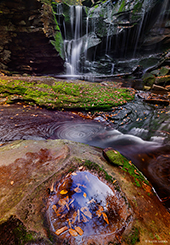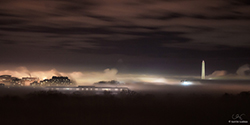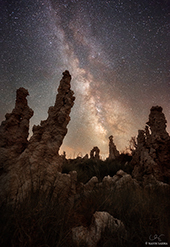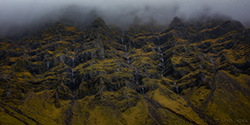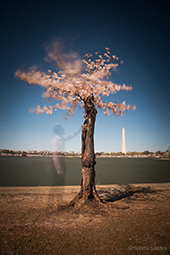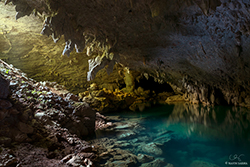
|
|
|||||
|
Featured Photographer, May 2017: Navin Sarma
We are happy to have Navin Sarma as our featured guest photographer this month. We appreciate that he gave us some of his time and generously shared his beautiful photography with us! Please visit his links to see more of his work, and to let him know you enjoyed this interview. :: How did you get your start in Photography? What about this particular medium excited you? During my early 20s, I was lucky to do a good amount of traveling through a study abroad in London and trips to Europe, Asia, and South America. I captured photos along the way and thought of myself as a "documenter" of my experiences. As I got a little encouragement through social media, I spent more time on photography -- particularly landscapes and the environment. As I spent more time with photography, I found myself turning from a "documenter" to a "creator" and found a lot more excitement in trying to use graphic elements to deliver an emotional message. :: You’ve accumulated a really nice set of images from around your hometown of Washington D.C. How have you applied what works with landscape photography into photographing a different type of environment? While city photographers usually lean towards street photography – the kind that depends more on the intersection of gatherings/events and people, my interest has been more about how the natural environment converges with the built infrastructure. With that focus, the approach follows the approach of shooting the natural landscape and includes scouting locations and considering sunrise/sunset and moonrise/moonset times and locations, weather conditions, and seasonal changes. Many of DC’s sites are built along "natural" features where this approach can work. For example, the famed Tidal Basin, has the Jefferson, Martin Luther King, and Franklin Delano Roosevelt memorials built amongst cherry blossom trees which look significantly different each season and an inlet of water with changing tides, calmness, and colors. Every outing presents different conditions and photographic opportunities – just like in the natural landscape. There are some specialties to shooting in the city versus shooting in the wilderness though! For example, the combination of civil twilight and light pollution makes a for a surprisingly pleasing light and color combination – where lower clouds mix with the city lights to create a softbox of vibrant pinks and purples before an blood orange that lasts until the black of night. Another unique consideration as night falls is the dynamic range that increases between monuments and the skies. Spotlights emerge to illuminate the monuments and longer exposures become much more difficult to capture detail and color in those monuments and the environment without use of HDR. :: What challenges do the D.C. icons provide you that is different than the natural world? How do you tackle this challenge an keep the subject fresh, and exciting for you creatively? Like all icons, the biggest challenge is creating something that someone has not seen before. Shooting in a city, there is an even greater likelihood that a certain image has been shot before or will be replicated. I like the challenge of trying to differentiate myself in a crowded market. I try to show an appreciation for the natural environment and how it interacts with built architecture. I am fascinated about how beauty and drama in natural features such as weather, celestial activity, flora and fauna can affect how we operate in and appreciate our city and its monuments. I like to think that approach is unique from other perhaps more architectural or documentary photographers of this city. I also try as much as I can to differentiate by choosing quality over quantity. My DC imagery is tailor made to be printed large for clients looking for fine art representations of this city. Taking the extra time to bracket or use a tripod makes a big difference when printing something at 5 feet or above. I think that using this approach over the last several years has allowed me a distinctive portfolio of DC shots! I hope that my portfolio can stand the test of time… I am moving to the San Francisco Bay Area next month with my family so my DC work is now coming to a close! :: When I look at your DC work, what I see is a strong familiarity with the subject, how has that helped to refine your work with the monuments? Coming back to a location allows me to find nuances I overlooked in previous visits. It also allows me a broader array of conditions to capture. These two elements combined with some visualization allow an more novel image to be realized. For example – near the end of cherry blossom season, one can find the Tidal Basin, which sit underneath rows of cherry trees, covered with swaths of fallen blooms. These blooms swish and sway in the water with the drag of the reservoir and the winds. Witnessing this led me to capturing an image of the retreating blossoms at the Jefferson memorial, and planning a future abstract close-up of blossoms under the right type of movement. A couple of years later, I captured an interesting shot of shining sun on ripples of water, and just-fallen blooms. This is an image that simply would not have come to mind without a degree of experience and thought within this one location. :: When it comes to your work now versus when you began what do you still find the most challenging? I find the creative process of imagery and photography as much and perhaps even more challenging today than when I started. It is relatively easy to get started and capture quality images. But sustained production with a strategic direction is very difficult. Sometimes I struggle to put words to images, portfolios, or the purpose of my photography. In those times of struggle, I lean on the craft and try as much as I can to go back to basics and remind myself that it is also a lot of fun to get out in the field and capture something compelling. I rely on a mix of conscious planning and subconscious tendency to continue building my portfolio of work. :: What was the biggest Ah-ha moment you had while learning photography? There was a vivid moment I had in late 2010 capturing the stars emerging over Great Falls – a set of waterfalls between Maryland and Virginia, just outside of DC. For the first time, I spent dedicated time truly appreciating just one location through afternoon, sunset, and now twilight. Not only was I amazed at how conditions changed with the roving light and varied weather, I was astounded with the emotional impact of the longer exposure, twilight images of the massive swirling eddies, racing clouds, and bright starlight. From then on, photography became an emotional outlet for me that I never knew I always needed. :: What image in your portfolio are you most proud of and what about the creation still rings out as special to you? In general, my more abstract images are more impactful for me since they are riskier and more emotional than more traditional, post-card like shots of icons under beautiful skies. It is easier to reproduce a well-exposed, rule-of-thirds composition of a popular icon than create a dark, blurry, or "unbalanced" abstract that may not resonate with the audience. Whereas a shot of an icon may or may not carry emotional impact, the message of an abstract is almost purely visceral. If I am effective at my delivery and the viewer "gets it", then I feel more accomplished as an artist. :: What’s the scariest thing that has happened to you while on a shoot? While most of what I have discussed is my DC work, I do an equal amount of nature photography and try to do a trip each season if possible. A few years ago, I was driving in the White Mountains of Northern California down a marked, gravel road. A 20 degree gradient under this road was too slippery for my 4x4 rental, which could not brake or back up from this road. I ended up skidding down the mountain and directing the car into a tree to avoid dropping off the cliff! A mile hike back up the road and I was able to flag down some help. I lost almost 2 days from my trip but was lucky to get out unscathed! :: The processing issue is always present, and every photographer has an opinion on how much is enough? What’s your stance when it comes to image manipulation and where to draw the line? I really don’t have a firm line. I think that as long as one is up front about processing, nearly every thing goes. There is no minimum or maximum that is "OK". Every digital image needs a level of processing, so it is arbitrary to draw lines as to what is allowed. Personally, processing is a vital part of my workflow. I usually perform RAW conversions with global adjustments followed by 1-5 masked layers for luminosity and 1-2 for color. I am generous with cloning and warping should the quality of the potential print allow it and if it is beneficial for the final message and/or composition. :: Is there one image you’ve seen in your mind that still eludes you? What is it, and how much does pre-visualization of images play a part of your work? Visualization I think is an important part of the portfolio generation process. I like to have a running list of projects that I am chasing for a given location. Given the set of conditions, I will attempt to capture one or more of the projects I seek. If it happens, great, and if it doesn’t there’s usually another project to add to the list. If I don’t know a location very well then visualization is not really part of my process at all. I then just use my camera as a means to explore and from that perspective, every location I have not visited includes images that still elude me :: What is your favorite piece of non-photographic gear? Besides the obvious of my phone, I would say that my Outdoor Research Men's Cirque Pants. Comfortable, warm, water resistant, utilitarian with multiple zippered pockets – I wear it nearly everywhere I photograph – city or nature. :: When it comes to the medium of digital photography, and the future of the craft what excites you the most? What gives you the biggest cause for concern? I love the advent of drone photography and look forward to simulating a tripod with advanced stabilization that allow longer exposures from different vantage points. I also love the trend towards large sensor mirrorless cameras and further enablement of smartphone cameras (RAW on the S7 edge and portrait mode on the iPhone 7 plus as examples) and wonder how photographers will approach the craft if/when our gear is nearly the same as a regular consumer. After downsizing from a set of 10+ primes and zooms to the "holy trinity" of 14-24, 24-70, and 70-200, I also look forward to further simplifying into a future, single lens. It would be nice to see some more innovation here versus sensor technology, but I look forward to a 1-1000mm/1.2 lens! So much to look forward to as far as technology! But for me, the biggest cause for concern is continuing challenges with outsiders valuing copyrights for images. I have found my images across the world used for commercial gain and have only received proper payment though sustained effort. This day in age, the internet that memes expects imagery to be free so it remains a challenge to promote the value of paying for licenses or prints. :: Being a resident of a large metro area, what natural locations do you like to head to that aren’t too far from you? Living in DC, the best, nearby locations include Great Falls (Virginia and Maryland sides), Blackwater Falls State Park in West Virginia, Shenandoah National Park in Virginia, Swallow Falls State Park in Maryland, and Falling Spring Falls in Virginia. All offer nice scenery including waterfalls and deciduous forests that look very nice in the fall. :: What is on your bucket list to shoot? There are just so many places to visit in this world! But in the next few years, I would love to capture some shots of the massive icebergs in Greenland or the Georgian Island. I still have not witnessed the aurora borealis despite two trips to Iceland. And I think massive waterfalls like Iguazu and Angel Falls would be amazing. Can I just play that game where I spin the globe with your eyes closed and point? :: What piece of advice do you have for photographers looking to get into this profession and are just starting out? I would say to fight the urge to be "popular" and try to find some meaning by pushing yourself to create. To me there are plenty of photographers who are social and feed off of the likes, shares, and reposts by others. I think this approach encourages many photographers to repeat the same type of imagery with similar themes – the bright colored jacket or umbrella, center composition for maximum impact on the Instagram grid, the catchy quote. It’s hard to improve as a photographer in an echo chamber. Instead of this approach, I find that challenging myself as to why am creating images and refining my "message" as an artist allows me introspection that helps me feel more insightful as a person overall. Finding channels, such as mentorships, critique forums, and classes that cultivate this sort of artistic curiosity are vastly more valuable to a budding photographer than a good Instagram hub. |
"Fight the urge to be 'popular' and try to find some meaning by pushing yourself to create..."
Photographer Spotlight Interviews
|
|
 |
Other Cool Stuff→ Past Workshop Photos → 72dpi.com → How-To Articles → Photographer of the Month |
 |
Contact Us→ Contact Us → About Us → Site Map |
© 2009-2024 Aperture Academy, Inc.

